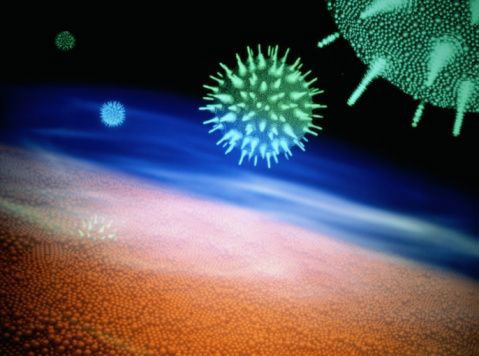Welcome to the Gallay Laboratory
Human Immunodeficiency Virus (HIV) Overview
Click here for Hepatitis C Overview

Preventing Human Immunodeficiency Virus (HIV) Transmission
More than 33 million people are living with the human immunodeficiency virus (HIV) and approximately 2.5 million people are newly infected per year. Worldwide, nearly half of all individuals living with HIV are now women, who acquire the virus largely by heterosexual exposure. Many women, because of limited economic options and gender inequality, cannot reliably negotiate sexual encounters, leaving them vulnerable to unwanted pregnancy and sexually transmitted infections (STIs), including HIV. In the absence of an effective vaccine, topical microbicide formulations, which are applied vaginally or rectally, represent an attractive solution to stop HIV transmission. Importantly, a proof-of-concept for vaginal microbicides was obtained in 2010, when the CAPRISA 004 trial showed a 39% reduction in HIV incidence after 30 months of tenofovir gel use compared to placebo gel use.
Our laboratory identified several classes of compounds, which exhibit very attractive in vitro microbicidal properties. However, these microbicidal candidates have obstacles to overcome in order to be used in humans. They first need to show safety and efficacy in vivo in animal models for HIV vaginal transmission. Moreover, they must achieve long-term protection and coitus-independent administration if they would become accepted HIV prophylactics in real world conditions. Therefore, our laboratory is conducting in vitro and in vivo studies designed to support the preclinical development of a novel sustained delivery system for anti-HIV microbicidal candidates that we identified. The development of a controlled and sustained delivery system for a safe, effective acceptable topical microbicide to prevent the sexual transmission of HIV could play a major role in worldwide reduction of the over 14,000 new HIV infections per day, and potentially save millions of lives.

